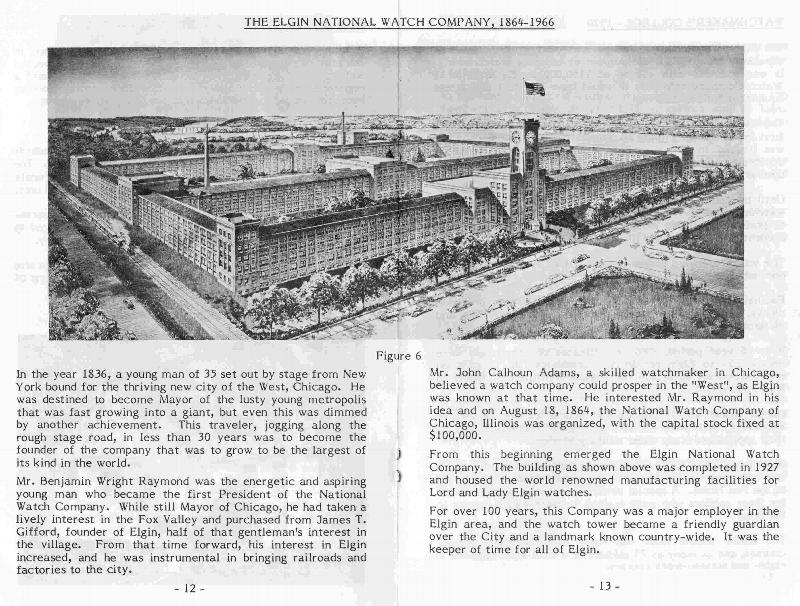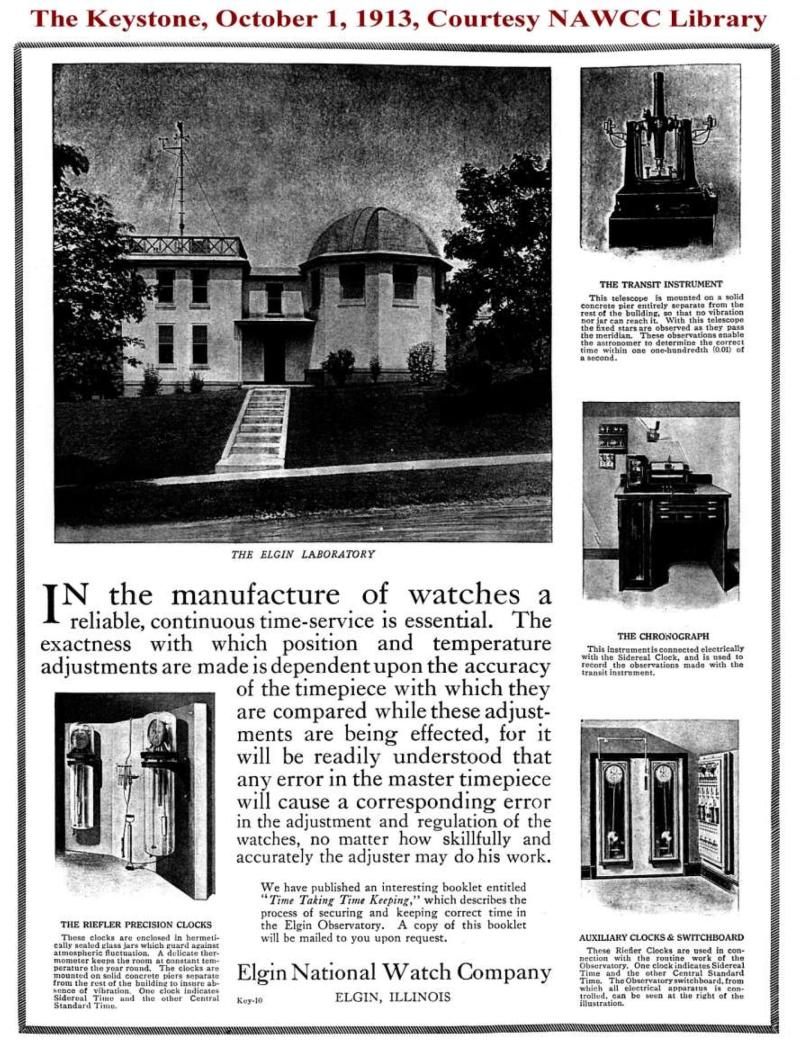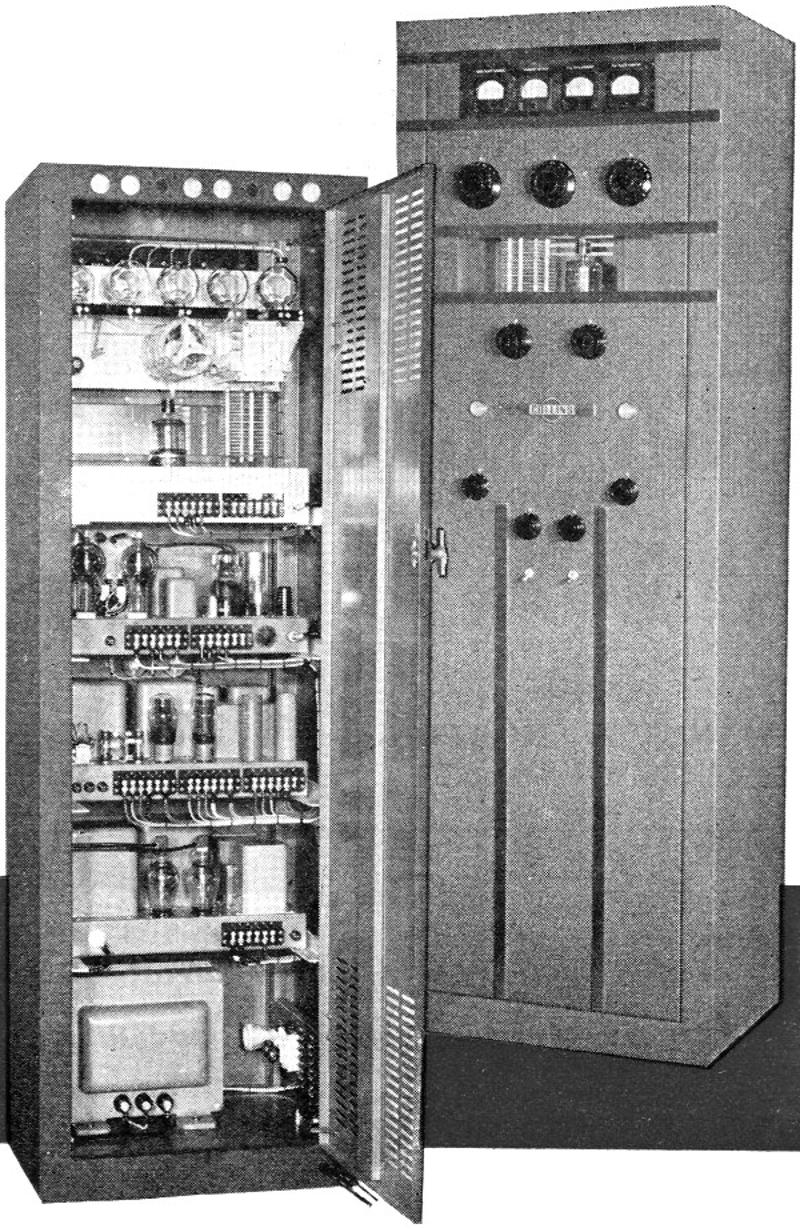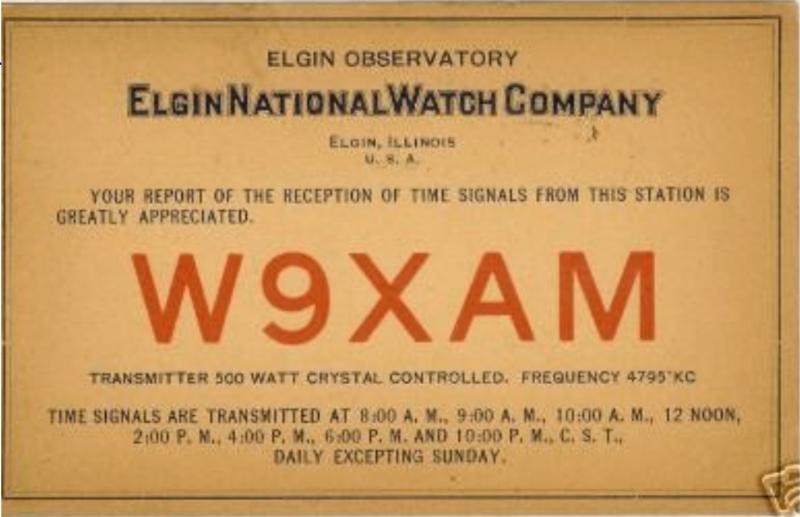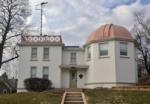
Posted By: Robert Nickels (ranickels) Posted: 05/09/2022 Historic 05/09/2022 |
The Elgin National Watch Company Time Broadcaststhe story of W9XAM |
|
Visitors to the Elgin National Historic area along the Fox River in Elgin Illinois may not realize they are at the site of a famous shortwave radio station - W9XAM - the time signal station operated by the Elgin Watch Company. Elgin was the only watch company maintaining an observatory that observed, recorded and broadcasted time from the stars correct to the hundredths of a second. Located at Raymond and National streets overlooking the factory, the building still stands today as the U-46 Planetarium/Observatory. The lack of correct time was a big problem around the turn of the 20th century. Commerce was unpredictable and train collisions caused by time errors between engineer's pocket watches resulted in railroad accidents and loss of life. In 1908 President Theodore Roosevelt directed the National Bureau of Standards to set tests for the accuracy of watches. In 1910 Elgin Watch built an observatory on the top of a hill just east of the watch factory, in part as a response to their competitor, Hamilton Watch, to provide accurate time information to its customers. Careful observation methods using Sun and star position had been refined over the previous century as the best way to accurately tell time. A telescope was used to very accurate identify the transit or meridian (due-south) crossing of the stars, from which astronomers were able to accurately determine the local time. An instrument called a chronograph was used to convert observations to accurate time, which was used to set two German-made Riefler clocks - one kept sidereal time and the other was set to standard time. The observatory was a significant investment and source of company pride - as is clear from advertisements at the time. The Rieflers were the most accurate timepieces of the day but to insure the accuracy of these clocks, they were housed in carefully constructed insulated vault. Each clock was mounted on a concrete pier that extended 60 feet down in the ground. Heat from a group of light bulbs was used to maintain the vault at a temperature of 81 degrees F. within 0.2 degrees. Glass housings protected the clocks from variations in air pressure and was constantly adjusted to maintain accuracy. The Elgin observatory possessed a shortwave transmitter, which operated under an experimental license from the FCC - W9XAM. The 500 watt crystal controlled transmitter operated on a frequency of 4,797.5 (62.51 meters) for transmission of time signals only, much like today's WWV/WWVH or CHU. No recordings seem to exist of the W9XAM transmission but transmissions were made several times daily on a schedule that varied over the years. See the W9XAM QSL card for one, another source states that in 1932 time broadcasts were made four times a day at 8:55, 9:55, 10:55 AM and 12:55 PM. Given daytime propagation on 4.8 MHz it's unlikely the signals were heard much further than a few hundred miles except at night when skywave would provide nearly global coverage. According to an Elgin history source, the "500 watt 1947 Collins transmitter" is still on display in the planetarium. According to an Elgin radio expert, it's a Collins 30K-4, which is the only 500 watt transmitter in the 30- series but it would have be acquired late in the time-broadcast years and there are no records of when it was used for time transmission purposes. W9XAM was licensed as under FCC experimental service rules which required some regular period of operation. All Collins AM transmitter are highly coveted by AM hams today, and W9XAM has been preserved as a club station call by the Elgin National Watch Co. Observatory Radio Club. Ultimately In the end, the advantages in technology that created the Observatory also resulted in its obsolescence. As more accurate methods of timekeeping like the atomic clock came into being, celestial observations became unnecessary and the Elgin National Watch Company closed the doors to its Observatory in 1958. The watch company factory was demolished but thankfully the Observatory was saved and two years later it was donated to the school district and still looks more or less the same today, with an addition to accommodate the planetarium. Designed by Elgin architect George Hunter, the Watch Factory Observatory was designated a local landmark and listed on the National Register of Historic Places in 1994. Over 1 million students have been introduced to the stars and planet at the U-46 Planetarium and it should soon be again open to the public. It can be found at 312 Watch St. in Elgin, or at the U-46 WEBSITE While we don't have audio recordings of W9XAM, the following clips of WWV from the 1950s may be familiar to some older SWLs: "Radio Time" - the title of an article in Dec. 1942 RADIO NEWS magazine, features both the Elgin Radio Time Station and observatory as well as the US Naval Observatory. Anyone interested in "radio time" will find it worthwhile reading - a copy can be found in the "Attachements" section below. |
|
Related Images
Click on the image title or on the image itself to open the full-sized image in a separate window.
Related File Attachments
| Description | Comment |
|---|
Latest Articles
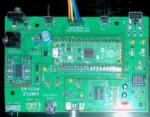
Technical
Posted: 01/29/2025
Comments: 0 |
Pico Rx performance - Excellent performance on 630m WSPR
The Simple Pico Rx is my minimalist implementation of Jonathan Dawson's "Pico Rx" at 101things: https://github.com/dawsonjon/PicoRX In this basic form the receiver consists of a Quadrature Sampling Detector (QSD aka Tayloe) and the Pico2 MCU which handles all DSP functions. There are NO front-end filters, the only bandwidth limitation comes from the tracking filter... READ MORE |
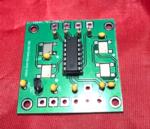
Crystal Replacement
Posted: 08/226/2024
Comments: 0 |
Making SMT "no lead" parts easier to use
SMT is the future - but how can we actually use parts without leads? ... READ MORE |
|
Crystal Replacement
Posted: 02/38/2024
Comments: 0 |
How good can a crummy receiver be?
Hundreds of different simple SDR receivers have been designed around Dan Tayloe's Quadrature Sampling Detector or QSD. Mine add nothing to the state of the art, and in fact subtract things, as I like minimalist solutions and the QSD is right in that sweet spot. Following the evolution of Tayloe's design I delete the resistors in series with the sample lines for inst... READ MORE |

Technical
Posted: 02/37/2024
Comments: 0 |
What's in a number (3253)?
The FST3253 dual four-to-one mux/demux IC has long been used as a "Tayloe Detector" or QSD (and QSE) in low-cost SDRs. They provide incredible performance for such a simple circuit, converting RF to baseband IQ with low loss and the ultimate in simplicity. Unfortunately the original FST3253 part has become obsolete and while substitutes are available, this is where the... READ MORE |
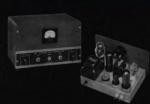
Vintage Ham Radio
Posted: 02/32/2024
Comments: 0 |
The Stancor 10P Transmitter
There weren't really many commercial transmitters in the 1930s as most hams built their own. But many of the ones that were offered came from the transformer companies who had two chances to profit. First, from those who would buy the kit, and two, from those would would see it in the (free) booklets the companies provided to their distributors who would then sell the iron to ham... READ MORE |

Vintage Ham Radio
Posted: 12/355/2023
Comments: 0 |
The Care and Feeding of the EF Johnson Courier amplifier
The EF Johnson "Courier" is a grid-driven amplifier using two 811A tubes. Switching is provided for operating in either class C for CW or as a class B linear amplifier for AM or SSB. Rated power is 500 watts input for CW, 500 watts PEP input for SSB, and 200 watts input for double-sideband AM with carrier. Since all amateur power levels were meas... READ MORE |

Historic
Posted: 11/329/2023
Comments: 0 |
TV Duplexer
Some things are interesting, even if totally useless nowadays. Such is the case with the Philco 426-3034 Crossover Kit for UHF TV. What the heck is that? Well, back in the late 50s, UHF television stations operating on channels 14-83 started to appear in many areas of the US where viewers had a VHF-only TV antenna, and in many cases an externa UHF converter was... READ MORE |
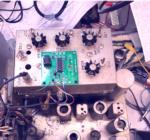
Crystal Replacement
Posted: 11/327/2023
Comments: 0 |
Replacing failed crystals
For decades, quartz crystals were used everywhere a stable frequency source was needed, even in some applications that depended on overtone (harmonic) behavior into the VHF range. These crystals were less stable and more dependent on circuit parameters that fundamental types and thus more problematic. Such was the case with the 94 MHz crystal in the 2 meter converter ... READ MORE |
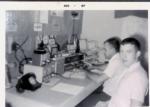
Historic
Posted: 11/315/2023
Comments: 0 |
My Own Ham Radio Story by W9RAN
Everyone has a story of how they got involved in ham radio - this is mine. It started much earlier, including receiving a Knight Kit Span Master shortwave radio for Christmas in about 1963, at age 12. I'll never forget the night my dad and I finished building it and I wanted to try it out. It came with a 50 ft. antenna which was still coiled up - but ... READ MORE |

Technical
Posted: 09/267/2023
Comments: 0 |
Hot to simulate vacuum tubes in LTSpice
LTSice is a powerful simulation tool that is provided free by Linear Technology Corp. It comes with a complete library of passive and common analog solid-state components but if you want to use it to simulate vacuum tubes, it doesen't work as-is. Even though triode and pentode symbols can be found in the "Misc" folder, they are just schematic symbols and... READ MORE |

